Toronto International Film Festival 2017 Report Part 6: Peripheral Perspectives
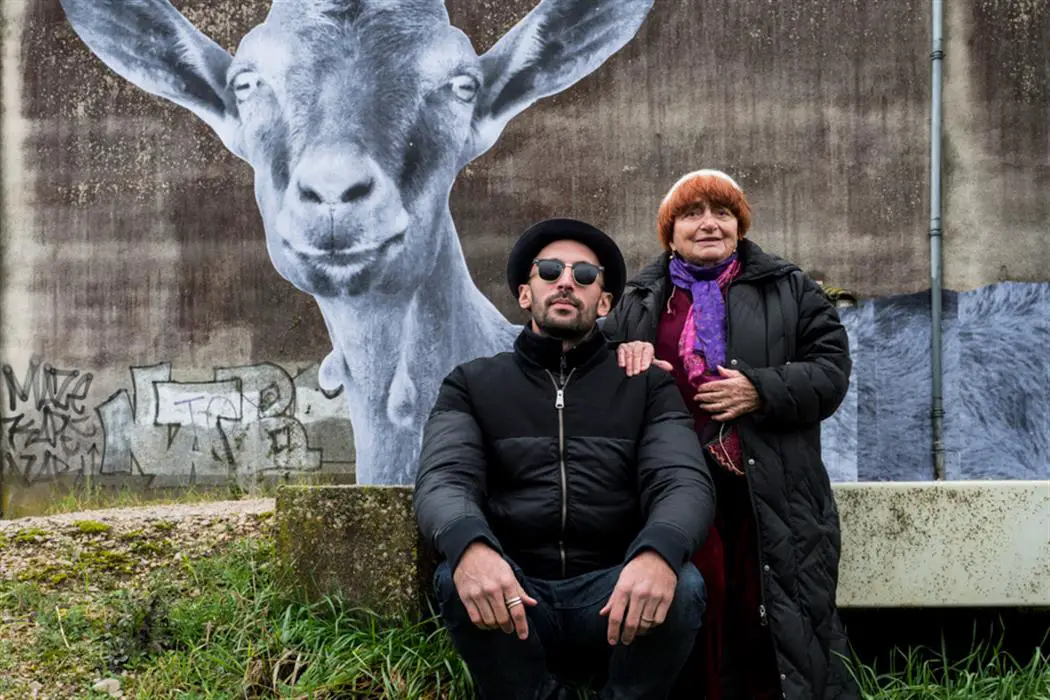
Tomas is a chronic cineaste who studied English literature in…
Day Nine kicked off the festival’s final weekend, and with it, the end of press screenings. It was time to have my badge scanned one more time before laying the lanyard down in a drawer with my other TIFF materials. One more ride up and down the mega escalators before bidding farewell to Scotiabank… at least until I made my way there for a normal screening after the festival. Now I was able to venture to public venues to take in some international fare, and by and large I was not disappointed.
What more can be said? The weather was fine, the crowds were now fairly thinned out, and in spite of all the fatigue from sitting in cramped spaces for long periods and eating cheap meals, I was still operating in decent condition. I did get a little sick after the festival ended, but that’s not a story worth reading. You’re here for my take on the films, and those takes you shall now have.
Faces Places (Agnès Varda & JR)
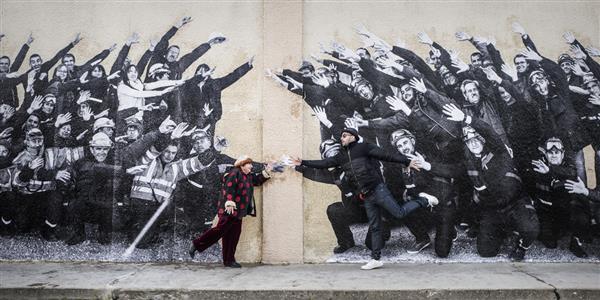
Before it began, TIFF’s artistic director Cameron Bailey came out to introduce Agnès Varda’s latest creation, a project which she collaborated on with French street artist JR. When Bailey or (now outgoing) CEO Piers Handling are there to present a screening, you have to sit up and take notice. They run the show. They are the “faces” of the festival. So seeing one of them is an indicator that the film is a big deal, even if it’s just one of their personal favorites.
Such was the case with Faces Places. Bailey enthusiastically told the audience that it was his favorite title from Cannes, and from the excitement in his voice, I had no doubt he was telling the truth. Was he right, though? Was this documentary going to surpass everything I had seen thus far? I knew Varda was an extraordinary filmmaker, but now at 89 years of age, did she have enough left in her to make one more crown jewel for her remarkable oeuvre?
Dear reader, if there’s any advice to be given here, it’s that you never, ever doubt Agnès Varda. As soon as I walked out into the lobby of the TIFF Bell Lightbox after Faces Places ended, I knew instinctively that I had seen the best film of the festival. Bailey’s adoration was vindicated, and judging by the warm, extended applause both before and after the end credits, my audience was in a similar mood of admiration.
On its surface, Faces Places is a travelogue, gently rolling through various small villages in northern France as Varda and JR sit in his mobile photo booth (a truck decked out to look like a giant camera). Their mission is simple: photograph the faces of the people they meet and paste their large portraits on the sides of buildings and other structures. There is no grand statement to be made about their work. They simply wish to bring a sense of wonder to people living ordinary lives, honoring their existences by transforming them into beautiful works of art. The image, a concept fraught with ambiguity, is here harnessed as a source of good. It celebrates rather than violates.
Adding to the convivial air are the directors themselves, crossing generations to form an authentic friendship that warms the screen at every turn. Even if their conversations are not exactly spontaneous, the ways in which they rib and tease lack any kind of malice. If JR pokes fun at Varda’s petite figure, it is in the playful tone of a brother joshing with his sister. And when Varda in turn expresses annoyance at JR’s insistence on wearing his sunglasses at all times, she comes across as a mischievous mother rather than someone bitter or spiteful. Their camaraderie is so devoid of negativity, and so heartwarming in spirit, that you wish they had found each other sooner—that this film were a sequel in the vein of Michael Winterbottom’s The Trip trilogy rather than a standalone work.
But what puts it over the top for me is the sheer effortlessness of its emotional undercurrents. It’s like Varda and JR are not even trying to make us cry, and yet (for instance) when one woman sees her portrait plastered outside her home and is struck speechless by the sight, we cry anyway. The inherent power of art is like a conductive channel, and when it is unforced, it can touch us in the profoundest ways. Faces Places has no pretensions to do anything but tune us to the affective potentiality of art. To the ways in which art is a shared zone of contact, and the ways in which it can allure us within moments of visual exposure. Neither Varda nor JR philosophize or filter their mission through inaccessible academic discourse. Art in Faces Places is experienced and felt in the moment, empowering its subjects and showing us that it has the capability to both heal and reveal.
But, like life, like vision, art is ephemeral. JR’s installations are not permanent, and are prone to be torn down, pasted over or washed away (as in one instance late in the film, when Varda’s seaside portrait of photographer Guy Bourdin disappears when the tide rises). And Varda’s own ability to see the art in her world is slowly fading as her eyesight deteriorates. The adventures she partakes in here may be some of her last, as in time she will no longer be able to see even the largest works of art with clarity. The film meditates on such loss, though it takes care not to be too bleak about it. It is the way of the world, and Varda’s world will cherish acts of creation right up to the very end.
That is what I love most about Faces Places. Even its bittersweet facets are not mired in a depressing self-pity. There is undoubtedly some sadness related to Varda’s mortality, perhaps no better encapsulated than during a trip to Jean-Luc Godard’s house that goes terribly awry, yet it does not puncture the giddiness and amusement that Varda and JR so jubilantly cultivate. The feeling is autumnal, but not in a cold, rainy way that threatens to overwhelm. That is because, for Agnès Varda, a true living legend if there ever was one, the sun still shines on a world of endless possibilities.
She can sense it.
So can we.
Sweet Country (Warwick Thornton)
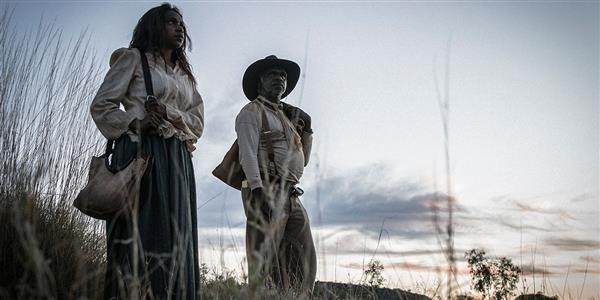
On the last day of the festival, Warwick Thornton’s Sweet Country was awarded the Platform Prize ($25,000 CAD) by jury members Chen Kaige, Małgorzata Szumowska and Wim Wenders. It, along with eleven other titles from five continents, were chosen to comprise the programme because they “showcase artistic and inventive directors that fearlessly push boundaries […] exemplify[ing] bravery, dynamism and a unique voice in storytelling,” according to Piers Handling. I’ve personally interpreted the programme as promoting films and directors that might otherwise fly under the radar, with a few choice exceptions (for instance, Pablo Larraín’s Jackie won the prize last year, and the programme also included eventual Best Picture winner Moonlight).
I was only able to see two other Platform films this year (one was here). This was mostly because many I had originally scheduled received tepid notices, and willfully forcing yourself to see films that others are not enthusiastic about is like going for a dental checkup. Not fun. Sweet Country, however, was one of the films that did have great notices, and with a big hole in my schedule, I was more than happy to give it a go. It was also my last Press and Industry screening of the festival, and the final press day itself was devoted solely to films from the Platform programme.
I made the right decision. I think the jury did, too, even though I’m not qualified to give an opinion. That is because Sweet Country is a vividly intelligent redeployment of the Western, stark and lean to the bone, but holding great insight to the colonial power structures that shape both the characters and the narrative. I had criticized Scott Cooper’s Hostiles on the grounds that it too readily played into the marginalizing tropes that defined the genre in its early iterations, privileging the perspective of powerful white characters while relegating its primary Indigenous characters to positions of silent acquiescence. Films like this do not serve a purpose anymore. Our cinematic canon—our history, even—is littered with examples of colonial silencing and Indigenous misrepresentation, and we can go back to those if we need to dissect their problematic natures. Nothing more needs to be said in that regard.
Sweet Country acts as antithesis to these macho spectacles. It is a Western not about heroic whites surviving the ragged terrains of uncharted territories, but about the lives of Australian Aboriginals (more specifically, the Arrernte) who are forced to struggle against the cruel oppression of colonial bondage. It is their perspective that Warwick Thornton privileges. Their bodies, their language, their humanity. And instead of further proliferating the standard colonial narratives, Sweet Country ends up giving them a swift kick in the shins.
For instance, most of the white characters are vilely racist, each controlling their dislike of the Arrernte laborers to varying degrees of success. Some, like the violent drunkard Harry March (Ewen Leslie), are dangerous aggressors, quick to point weapons and shout expletives. Others, like landowner Mick Kennedy (Thomas M. Wright), are less temperamental, but still harbor colonial beliefs of superiority and paternalism—even when they have half-caste sons like the young Philomac (Tremayne and Trevon Doolan). And then there are those enforcing the colonial law, like the proud Sergeant Fletcher (Bryan Brown). He may be the most dangerous of them all, for his vision of the Northern Territory is expansionist to a hilt, free of the dark-skinned bodies that he chases in order to slake his unquenchable thirst for justice.
The only white character portrayed in a sympathetic light is religious preacher Fred Smith (Sam Neill). It is he who treats his Arrernte workers with the respect they deserve, but what is most crucial here is that he is also the one who inadvertently instigates their downfalls. When he lends Sam Kelly (Hamilton Morris) and his wife Lizzie (Natassia Gorey-Furber) to Harry March, it results in Sam and Lizzie becoming fugitives. Then, at the end of the film, when Smith tries to quell the hot blood of vigilantes, he fails. Though he is not the instigator of racial violence and intolerance, his furious screams into the void as the film ends do not absolve him from complicity. Thornton is clear about this. These white men, both evil and good, are all entangled in an ugly system of brutality, and there is no turning back from the damage.
Graced by stellar turns from Morris, Gorey-Furber, the Doolans and Gibson John (who plays stockman and tracker Archie), Sweet Country succeeds most in lending its Aboriginal cast a sense of dignity that something like Hostiles obfuscates. Their characters are all richly drawn, some quieter or less likeable than others, yet they all hold as much—if not more—importance as the white characters. The demeaning hierarchies in the story are not replicated in the cast list. Demeaning methods of marginalization no longer apply here. The Aboriginal characters are active and individuated, possessing beating souls that exist in a symbiotic relationship with the land of their ancestors. The film pays them tribute, swapping style for a spiritual simplicity, and it results in a splendid piece of filmmaking that I’m sure will survive the test of time. It works hard for it, and deserves to.
On Body and Soul (Ildikó Enyedi)
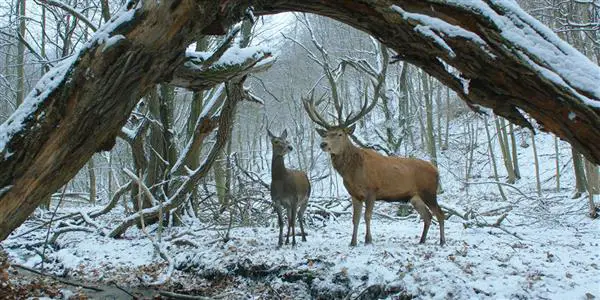
Seated in the balcony of the Winter Garden Theater, I saw Cameron Bailey yet again come out to introduce a screening, this time for Hungarian director Ildikó Enyedi’s first film since 1999’s Simon, the Magician. Bailey struck a similar tone to the introduction he gave for Faces Places, readying us for something special, and Enyedi herself was on hand to do the same. On Body and Soul won the Golden Bear at Berlinale this past February, but would it be able to win my heart? I was two-for-two, and so far, the prospects looked good.
And for the first thirty minutes or so, the prospects were good. Enyedi’s direction is like intricate needlepoint as it threads back and forth between various settings, all conceptualized with clear, aesthetic precision. The first is a snowy forest where two deer seem to form an inseparable bond. The second is an antiseptic slaughterhouse where its two main characters work and, eventually, meet. As cows are butchered by the efficient machinery (with one scene actually depicting the process head-on, with no CGI trickery involved), Mária (Alexandra Borbély) inspects the quality of the meat, while Endre (Géza Morcsányi) ensures the finances are up to snuff.
Mária is new to the place, and is so painfully introverted that none of her coworkers care to socialize with her. She does her job with detailed efficiency and goes home, end of story. Endre, himself somewhat of a quiet type, is intrigued by her aloof personality; unfortunately, when he tries to strike up conversations with her during their lunchbreaks, he is unable to crack through her impassive exterior. That is, until one day they learn through the company psychiatrist (there to investigate the theft of some sexual stimulants) that they share the same dream every night: that of the deer roaming through the snowy forest.
Through this magic realist device, Enyedi seeks to explore the ways emotional bonds are formed between people who do not (and, in some cases, cannot) express themselves like everyone else around them. The human race is a spectrum of unique personalities; On Body and Soul seeks to lend dignity to those on the periphery, seen by many but known intimately by few. In one sense, it works. The delicate dance between Mária and Endre as they quietly learn to understand one another is performed with a lovely sensitivity by both Borbély and Morcsányi, and despite their idiosyncrasies, it is easy to cheer on their union. There is an endearing quality about them that is aided by Enyedi’s wistfully-driven vision and cinematographer Máté Herbai’s crystalline camerawork, which echoes the fragility of our protagonists.
Unfortunately, the film is not the success it wishes to be, because it fails in its depiction of Mária. This is not Borbély’s fault, however. She does exactly what she is told to do, and is extremely convincing. The problem lies in the way the character is written. Enyedi reveals nothing explicitly, but from Mária’s affectless demeanour and her inability to engage with others, one can surmise that her behavior cannot be helped—that it is deeply ingrained within her being. It is assumed, then, that she has some kind of neurodevelopmental disorder, whether it be autism or obsessive-compulsive disorder.
Now, the difficulty I have here is that whatever disorder Mária possesses subsumes her until she no longer seems human. Enyedi goes to such extremes to paint Mária as an outcast that, in the end, the label represents the entirety of her character. This is especially irksome later on in the film, when Mária tries to find ways to woo Endre and possesses all the nuance of an automaton visiting Earth from another planet. A scene in which she blankly samples a stack of CDs of varying genres at a music store, for instance, is perhaps the most memorable example I can give, but there are others (including one that somehow descends into a kind of farcical comedy routine when serious physical injury elicits barely a twitch from Borbély’s porcelain visage).
My audience found her odd behavior funny, but I couldn’t laugh. As I watched Mária’s exploits unfold, I felt myself thinking that Enyedi was missing the mark. That, in actuality, she was painting a rather unflattering portrait of the neurodivergent community and enforcing some damaging preconceptions and stereotypes in the process. There are people who take their own lives because they are thought too different and strange by others. This is not a film that will comfort them. In fact, it may even solidify their negative self-perceptions.
This was especially surprising given my understanding that Enyedi herself is something of an introvert. If she wanted to honor others like her, why did she choose to strip away Mária’s human nature until she was nothing but her condition? It felt like such a step backwards that my previous goodwill for the film crumbled away because of it, and so I could not give it a standing ovation with a good conscience. Though it has artistry in spades, and Enyedi’s talent cannot be doubted, On Body and Soul does not do justice to the people it wishes to represent. A noble failure it may be, but it’s a failure nonetheless.
Zama (Lucrecia Martel)
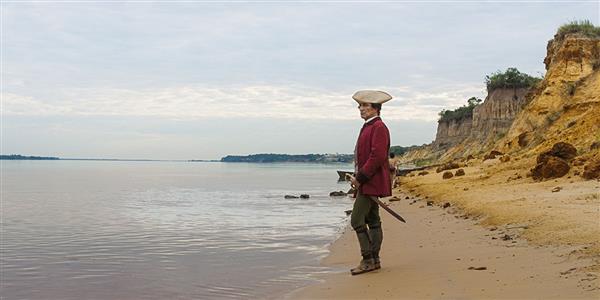
I don’t think TIFF schedulers knew how big Lucrecia Martel’s Zama would end up being. It’s her first film in nearly a decade, and over those intervening years she has developed quite the following as one of Argentina’s foremost auteurs. So sticking a screening of the film in poky Cinema 3 of the TIFF Bell Lightbox was perhaps not such a good idea in retrospect. It and all other showings sold out fairly quickly, and many people who were unable to score tickets were left out in the cold, as very few (if any) in the rush lines were able to gain admittance.
I was one of the lucky ones, scoring a ticket from a prepaid package I had redeemed well in advance of the public sale. Knowing how in-demand it was made me even more excited to see it, and scheduling it late into the festival allowed me to have something to look forward to. Even if Movie X sucked, I kept thinking to myself, at least I know Zama will be worth it. And so there I was, on a Friday night, standing in a long and sweaty line as (predictably) the screening was held up due to another film ending late. Fortunately, the Lightbox is not as labyrinthine as the Scotiabank, so shepherding people in and out of theaters is not as time-consuming. The film did start late, but the situation wasn’t as bad as others that occurred in the first weekend. I was not bothered.
If there is one mistake I now regret, it’s that I should’ve chosen a daytime screening. Zama is not a film you watch at night after seeing three other films in quick succession. It’s a phantasmagoric comedy of manners set in the midst of a hot and oppressive landscape, with a sound design that drills into your ears and a visual presentation that makes you feel its stifling atmosphere. In a blistering paradise, with the scorching sun bearing down on you and the blue sky reflecting on clear water, it is a gruelling task to stay awake. It always happens to me. Zama is the filmic equivalent of such a redolent, humid snooze in the tropics, and Martel’s dare is for you to resist at all costs. For that’s what the film is about. Resisting the temptation to close one’s eyes to the sultry decay of colonialism, but also learning how to avoid the fever of madness it holds.
(At this point, I should like to make it clear: I didn’t fall asleep, though I fought off the urge at several intervals. My drowsiness had nothing to do with the film’s quality, for as I said before, this was at the end of a long day. Even if I had I fallen asleep, though, I don’t think I would’ve earned Martel’s disapproval. The programmer who introduced Zama told us that, at an earlier screening, Martel even encouraged people to sleep through the film if they wanted to. I guess not all great art needs to be experienced with complete physical alertness in order for it to work. However, I do think Zama needs to be seen in its entirety, despite the fact that it constantly baits you to surrender to your greater impulses)
This is Martel’s first literary adaptation (the novel by the late Antonio di Benedetto is considered a Latin American classic, but the English translation was only released last year), her first period piece, and the first film she’s made that’s focused on a male protagonist. It’s bigger, bolder, and certainly more elliptical than her previous features, though it holds the same hypnotic sensuousness that by now seems to be one of her trademarks. The plot, meanwhile, is almost secondary to the mise-en-scène, following the listless existence of Spanish functionary Don Diego de Zama (Daniel Giménez Cacho) as he waits in vain to be transferred from a Paraguayan colonial outpost to his family in Lerma.
If Zama’s inability to change his geographical position is the film’s locus of intrigue, Martel does not contain it as a solemn crisis. Rather, she expands upon the existential absurdity of Zama’s inertia by coupling it with the agency of the land his people have unjustly occupied. Stronger hues, vivid soundscapes and a total absence of temporal signifiers terrorize this once great man. In moments of gravity, it mocks his worth, such as when a curious llama invades Zama’s personal space during an important meeting. A spot of earth that did not belong to the Spanish crown now eats away at one of its servants. He wants so much to leave it. It is no home to him. Nevertheless, the land will never let him loose. Home is no more a place of rest—it is a travesty wrought by the effects of murderous power structures.
I choose the phrase “eats away” deliberately, for Zama literally devours its protagonist. Giménez Cacho internalizes Zama’s disintegration with a face that becomes more and more forlorn, until his own sanity is placed in doubt during an expedition to root out an almost mythical revolutionary. Meanwhile, Martel frames Zama and others with a disembodying verticality, using her camera to quite literally chop off bodies, limbs and (especially) foreheads. By contrast, the lush ferocity of the Paraguayan outpost dominates a multitude of scenes, towering over and dwarfing the human characters without being subjected to the same kind of grotesque configurations.
Human flesh, too, is abjectly stripped of connectivity. Someone’s hands are cut off; a head is missing an ear. What was once whole—once signified—is quickly dismembered into a mound of paltry signifiers, highlighting the transience of its power. Zama, then, is Martel literally pulling apart the colonial ideal bit by bit, robbing it of its consequence. It is Martel symbolically castrating the white male colonizer, denying him his patriarchal privileges while, at the same time, forcing him to contend with the destruction he has enabled. And it is Martel consolidating her great prowess as a filmmaker, carefully constructing an audacious sensorial spectacle that, conversely, resists indulging in powerful overstimulation. It’s another winner in an immaculately crafted career, and will surely be seen as one of her grandest achievements.
Before I end, I would like to note one thing: Zama is not like Sweet Country in the sense that it prioritizes the Indigenous perspective. It has Indigenous characters, yes, but they are more a part of the landscape than direct influencers of Zama’s journey. Normally I would find this problematic, yet the very fact they are so attached to the land—a land that exhibits more agency than the white man at its center—allows Martel to empower them in a way we’re not used to seeing. We know they belong on the land we see, and Zama does not. We know that, in a sense, they are freer and more alive than the dried-up functionary who cannot facilitate an exodus that he so longs for. In the end, Martel sides with them, and though it’s not as attractive a solution as having more robustly-sketched Indigenous characters, it works because they are the only ones who escape this film intact—both literally and figuratively.
Toronto International Film Festival
In my very final dispatch, I’ll be checking out films by Alexander Payne, Sebastián Lelio and Armando Iannucci, before wrapping up my coverage with some final thoughts and a list of my favorite performances of the festival.
Which travelogue films do you enjoy most? Let us know in the comments below!
The Toronto International Film Festival ran from September 7th to the 17th.
Does content like this matter to you?
Become a Member and support film journalism. Unlock access to all of Film Inquiry`s great articles. Join a community of like-minded readers who are passionate about cinema - get access to our private members Network, give back to independent filmmakers, and more.
Tomas is a chronic cineaste who studied English literature in university (in both the undergraduate and graduate levels), and hopes to pursue a career in writing. His passion for film began in earnest at the beginning of the 2010s, and since then he's been reveling at the vast horizons of the cinematic landscape like a kid at the proverbial candy store.













